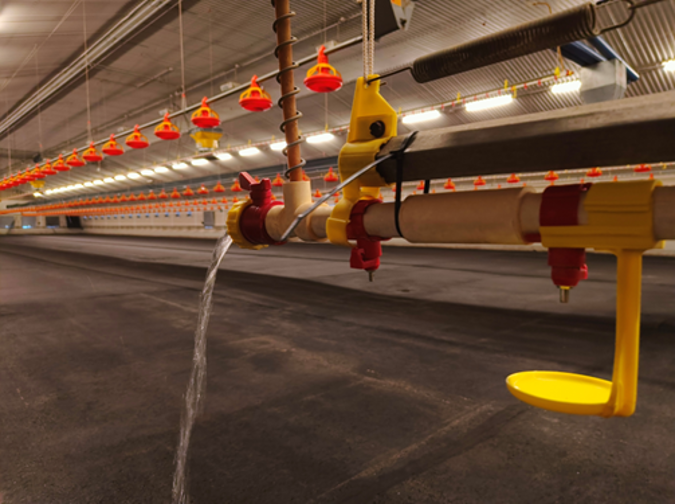Groundwater in Finland is known to be one of the highest quality in the world. Animals drink the same water as people. There are quality requirements and targets set for drinking water.
Washing and disinfecting water lines during batch breaks is a common practice in Finnish broiler farms. In addition to washing, it is important to disinfect water lines during each batch break, because a slime layer (biofilm) accumulates in the water pipes, where bacteria (including clostridia) can grow. This deteriorates the water quality and can also impair the functioning of the nipple line system. During the chick stage, the temperature in the house is high and the water flow is low. Dirty nipples also reduce the birds’ water intake. Dirty pipes and lines are also a disease risk for birds.
To ensure water quality and sufficient flow, the pipes and nipple lines must be cleaned carefully between each batch. There are effective, yet safe cleaning agents available. The lower the bacteria count, the better the conditions are for achieving optimal production results for the birds. Poor water quality and intake are reflected in growth results and bird well-being, among other things. Other parameters that describe water quality are its nitrate content, acidity and hardness, as well as the concentrations of various minerals.
Washing and disinfecting the lines is also a way to control disease pressure. In Finland, broilers of the production generation have not been medicated since 2010.




